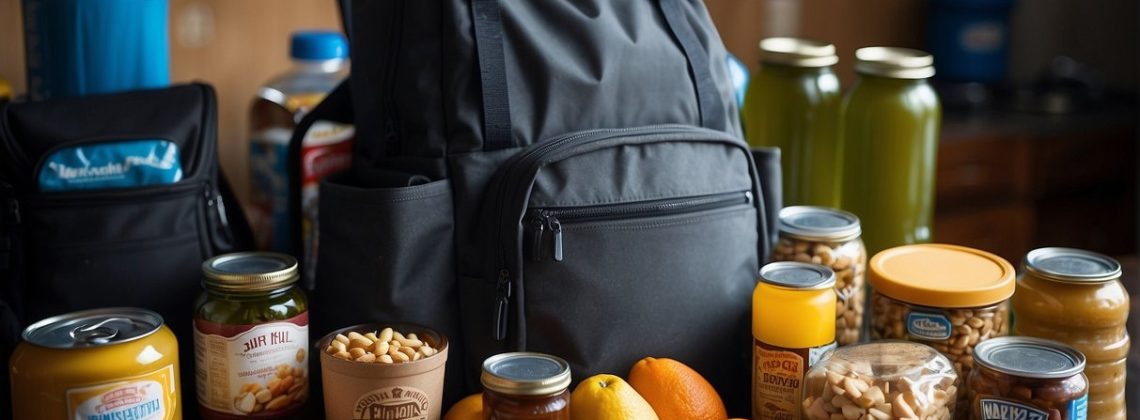
When preparing for an emergency, the food you choose for your bug out bag is a crucial component of your survival kit. In cases where you need to evacuate quickly, your bag should be stocked with food items that are both nutritious and easy to carry. The goal is to have a selection that provides you with the necessary calories and energy to sustain you, without taking up too much space or weighing you down. It’s important to strike a balance between shelf life, nutritional value, and ease of preparation.
In selecting food for your bug out bag, prioritize options that are high in protein and carbohydrates, while also rich in fats and oils. These macronutrients are essential for maintaining energy levels and body heat in challenging situations. Foods like nuts, seeds, and jerky are great high-protein choices, whereas energy bars and dried fruits offer quick carbohydrates. For fats, consider pouches or small bottles of olive oil or packets of nut butters. Additionally, dehydrated and freeze-dried meals can provide a warm, comforting meal with just the addition of water, and they have the added benefit of being lightweight and compact. We’ll take a look at some bug out bag food ideas.
Key Takeaways
- Nutrient-dense, lightweight foods should be prioritized for your bug out bag to ensure survival.
- A mix of proteins, carbohydrates, and fats will provide balanced nutrition and sustained energy.
- Convenience in preparation and consumption also plays a crucial role in emergency food selection.
Fundamentals of Bug Out Bag Food
When preparing your bug out bag, selecting the right food involves a balance of caloric density, shelf life, portability, hydration needs, ease of preparation, and your personal dietary considerations.
Caloric Density and Nutritional Value
For survival situations, your food should provide a high caloric yield relative to its weight. Calories equate to energy, so pack items rich in proteins, fats, and carbohydrates. Foods like nuts, seeds, and energy bars are dense in nutrients and calories, giving you the endurance you need without excess weight.
Shelf Life and Food Preservation
Choose foods with a long shelf life to ensure they don’t spoil before you need them. Dehydrated and freeze-dried foods are excellent as they preserve the nutritional value over time. Commercially prepared MREs (Meal, Ready-to-Eat) can last for years, providing a stable option.
Portability and Packaging
Your food should be lightweight and compact, minimizing size and weight in your bag. Look for items with durable, waterproof, and resealable packaging. Vacuum-sealed tuna pouches and protein bars are examples of portable foods that take up minimal space.
Hydration and Water Needs
Certain foods require water for preparation, which can affect your hydration plan. Strive for a mix of ready to eat items and those requiring minimal water, like instant soups. Always consider your water supply and opt for food that won’t deplete it.
Ease of Preparation
Select foods that are easy to prepare, keeping cooking time and effort to a minimum. Options that can be eaten hot or cold, such as MREs or tuna pouches, save time and resources. High-energy snacks that require no preparation are ideal for on-the-move sustenance.
Dietary Considerations
Finally, account for any health or nutrition requirements specific to you or your family. Balance your food selections with a variety of nutritional values, keeping alert for any potential allergens or dietary restrictions.
Remember, the foods you choose should help maintain your strength and health in a survival scenario. Invest in quality selections that meet these fundamental criteria.
Protein-Rich Foods
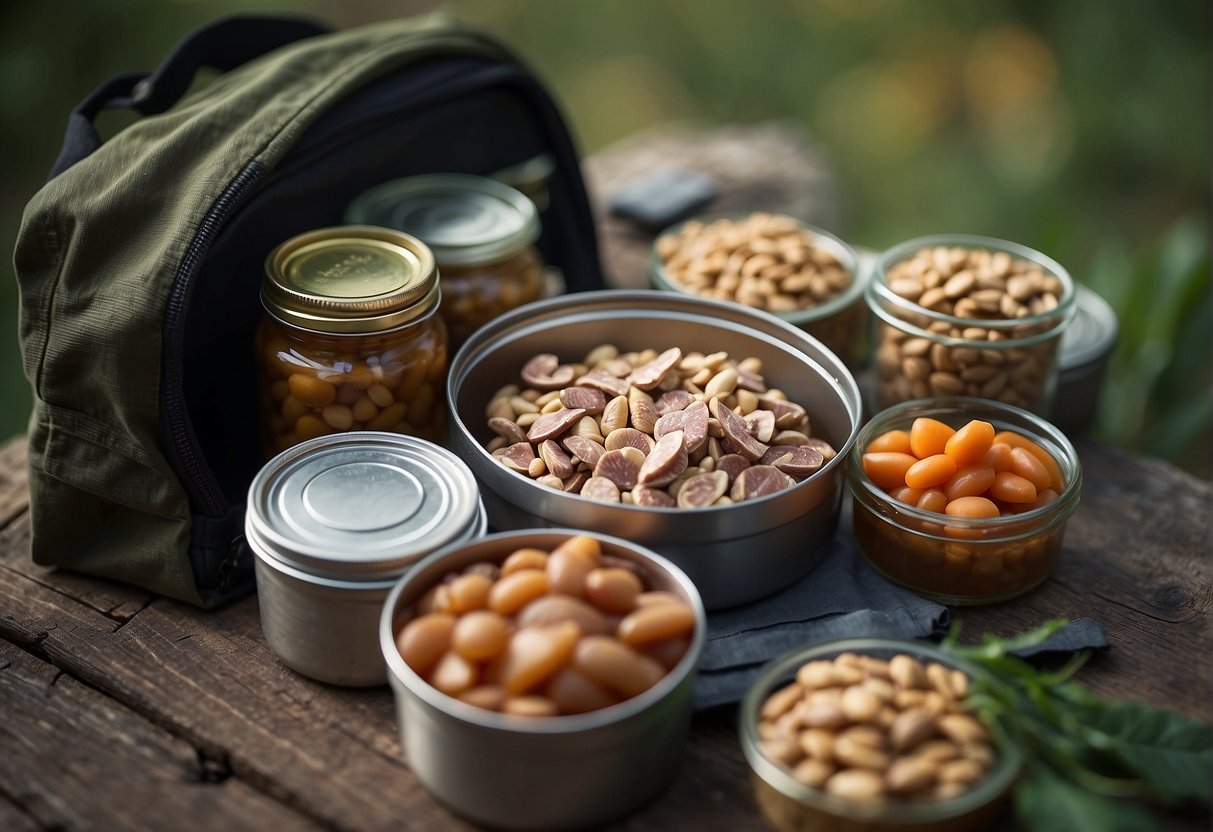
When considering proteins for your bug out bag, focus on options that are non-perishable, require little to no preparation, and provide substantial nutritional value. The goal is to maximize your energy and strength with proteins that occupy minimal space and have a long shelf-life.
Meat and Fish Options
- Tuna: Pouches or cans are lightweight and high in protein.
- Chicken: Often available in vacuum-packed pouches, convenient for on-the-go consumption.
- Beef Jerky: Dried and cured, jerky is a dense source of protein.
- Salami: Hard, cured meat that maintains its condition without refrigeration.
- Spam: Canned cooked meat that can be eaten without heating.
Plant-Based Proteins
- Nuts: Compact and energy-rich; includes varieties like almonds and cashews.
- Seeds: Smaller but still protein-packed, such as sunflower and pumpkin seeds.
- Beans: Can be found in dry form or pre-cooked pouches.
- Lentils: Require little preparation and are an excellent plant-based protein source.
Protein Supplements
- Protein Powder: A convenient powder that can be mixed with water for an instant protein boost.
- Meal Replacement Bars: Often include a balance of proteins, carbs, and fats for complete nutrition in a compact form.
Carbohydrate Sources
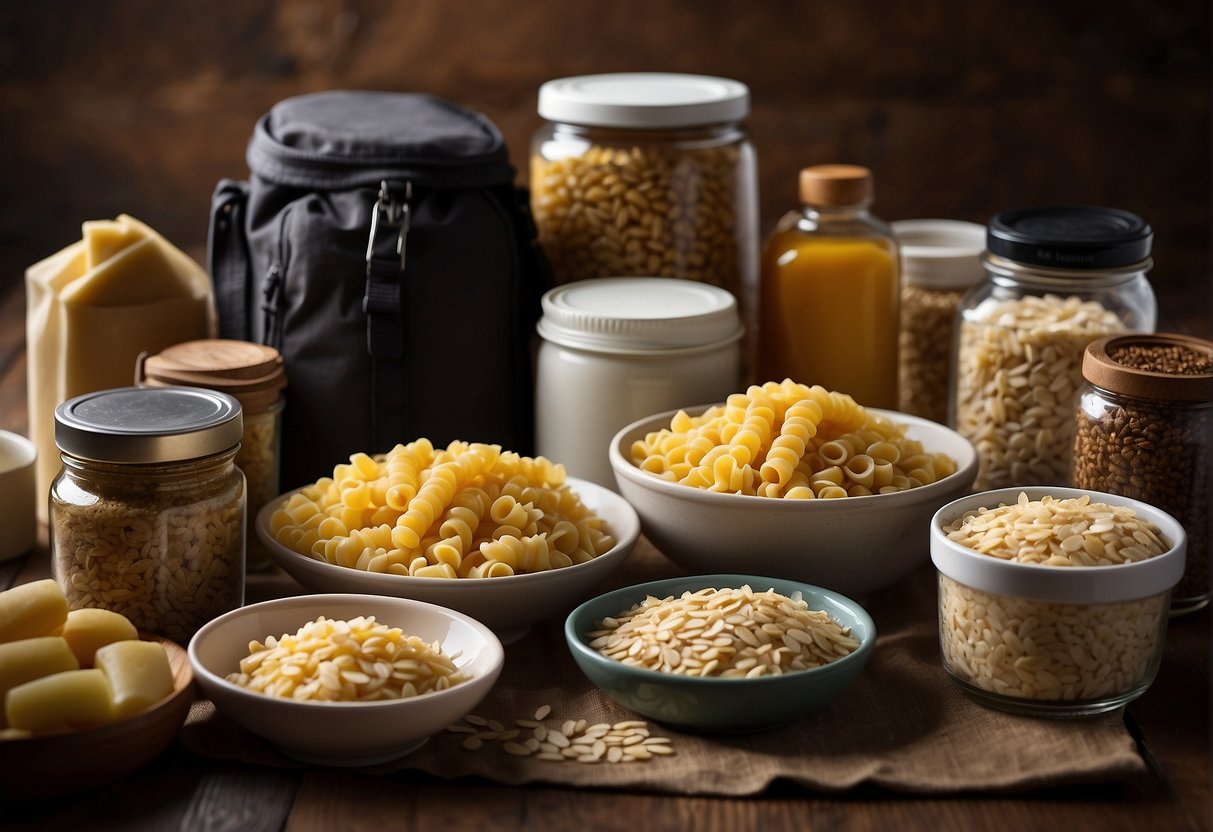
Carbohydrates are crucial for maintaining your energy levels during an emergency evacuation. In this section, you’ll discover specific carbohydrate-rich foods that are ideal for inclusion in your bug out bag, ensuring you have the necessary energy and caloric intake to stay alert and active.
Grains and Cereals
Grains and cereals are foundational sources of carbohydrates. Consider packing:
- Instant Rice: Quick to prepare and high in carbs.
- Oatmeal: Offers a good balance of nutrients and slow-releasing energy.
- Cereal: Dry cereal can be a practical, non-perishable option.
Ready-to-Eat Items
For convenience, include ready-to-eat carb sources:
- Bread: Whole-grain breads provide more nutrients and fiber.
- Crackers: Opt for high-fiber varieties to maximize energy levels.
Energy-Boosting Snacks
Snacks can offer a quick energy boost on the go:
- Granola: A dense source of carbs and calories.
- Food Bars: Such as Clif Bars and ProBars.
- Pop Tarts: Can be eaten without preparation.
- Trail Mix: A mixture of carbs, fat, and protein for sustained energy.
- Energy Bars: Often fortified with vitamins and minerals.
- Candy: Including M&Ms and Tootsie Rolls, for a quick sugar rush.
Fats and Oils
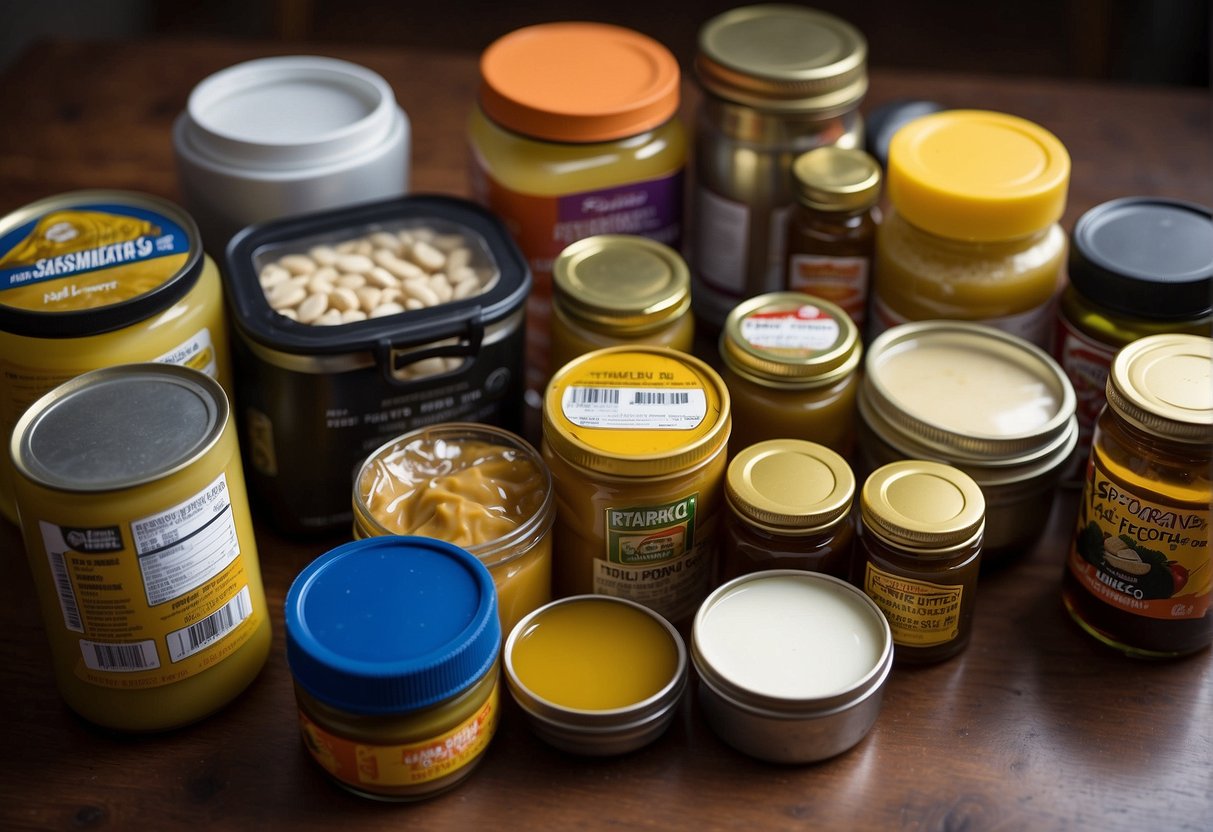
In your bug out bag, incorporating fats and oils is crucial due to their high energy content and ability to provide sustained calories. The right selection can keep your energy levels balanced during emergencies.
Healthy Fats
Nuts and seeds are excellent sources of healthy fats, offering not only energy but also necessary nutrients to keep your body functioning optimally. Options like almonds, walnuts, and pumpkin seeds are both convenient and non-perishable.
- Almonds (1 oz serving): 164 calories and 14 grams of fat
- Walnuts (1 oz serving): 185 calories and 18 grams of fat
- Pumpkin seeds (1 oz serving): 158 calories and 13 grams of fat
Likewise, cheese in snack packs is rich in calories and fat, providing both energy and flavor. It’s a good choice for those seeking variety and nutrition. Look for vacuum-sealed packages for longer shelf life.
Compact Energy Sources
For a more concentrated energy boost, include peanut butter packets or olive oil packets in your bag. Peanut butter is dense in calories and fat, making it an ideal energy-dense snack.
- Peanut butter (2 tbsp serving): 188 calories and 16 grams of fat
Additionally, individual olive oil packets can be used to add calories and flavor to meals. A small plastic bottle of olive oil is also viable if packets are not available, ensuring that you have a handy and versatile fat source at all times.
Dehydrated and Freeze-Dried Foods
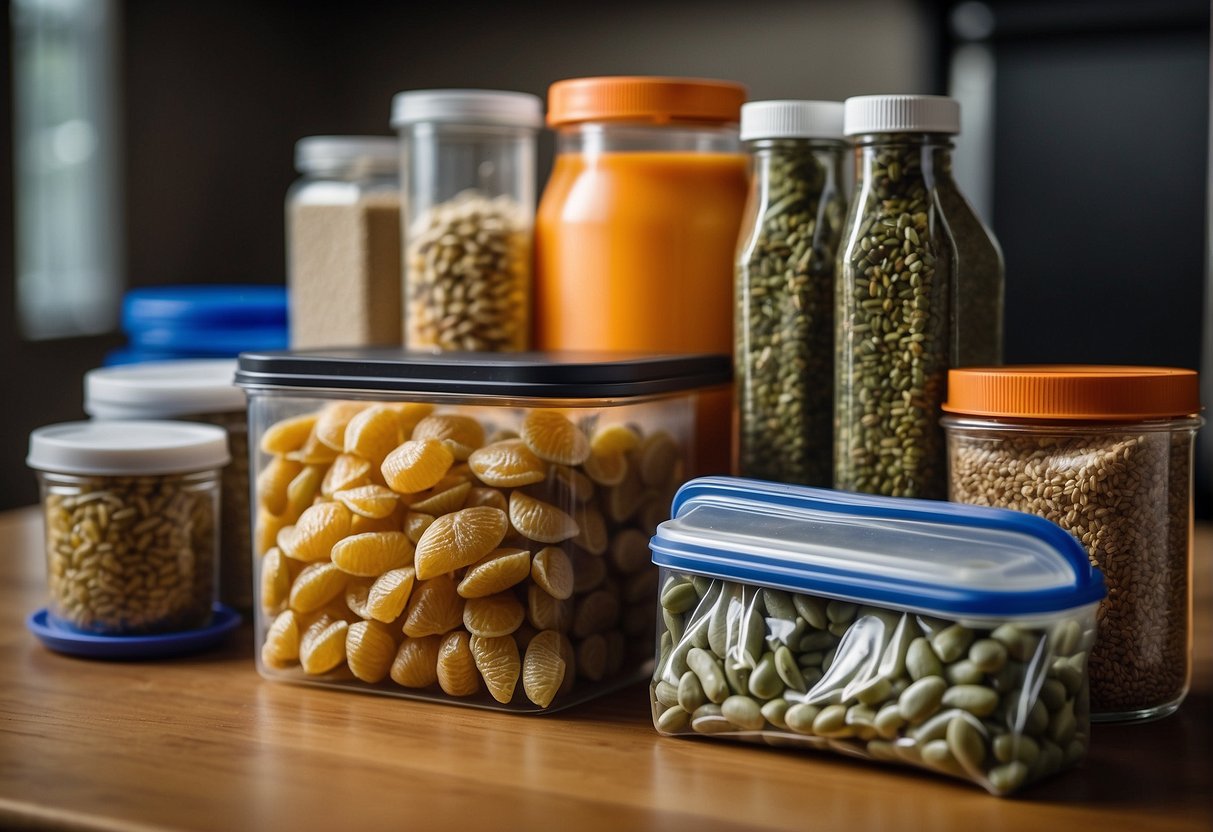
Choosing dehydrated and freeze-dried foods for your bug out bag ensures you have meals that are lightweight and have a long shelf life. These foods only require you to add water, and various options like fruits, vegetables, and full entrees are available.
Meals and Entrees
- Mountain House: A popular choice for ready-made freeze-dried meals, they offer a variety of entrees that are easy to prepare.
- Dehydrated Meals: Often sold in pouches or bulk, these can include pasta dishes, rice meals, and soups.
Fruits and Vegetables
- Dried Fruit: Select from options like banana chips, raisins, and other dried fruits that provide quick energy.
- Freeze-Dried Vegetables: These can be eaten as snacks or rehydrated to add to meals.
- Dehydrated Hummus: Simply add water and you have a protein-rich spread for crackers or flatbread.
Convenience and Comfort Foods

Your bug out bag should cater to both your nutritional needs and your morale. Including convenience and comfort foods offers a respite from stressors and boosts your energy with minimal preparation required.
Sweet Treats
Sweet treats always make it into lists for bug out bag food ideas! For a quick sugar rush and a moment of indulgence, chocolate and candy are excellent options. They are not only comforting but also provide a swift source of energy.
- Chocolate: Opt for high-cocoa content bars; they’re more temperature stable and packed with calories.
- Candy: Hard candies last longer and can provide a quick glucose boost.
Comfort Snacks
Simple and tasty snacks like granola, ramen noodles, and energy bars serve as easy, no-cook choices to satisfy hunger and provide comfort at the same time.
- Granola: It’s hearty, nutrient-dense, and comes in many flavors.
- Ramen Noodles: Just add hot water for a fast, savory meal.
- Energy Bars: These are specifically formulated to deliver sustained energy and come in a variety of flavors.
Additional Supplies and Considerations
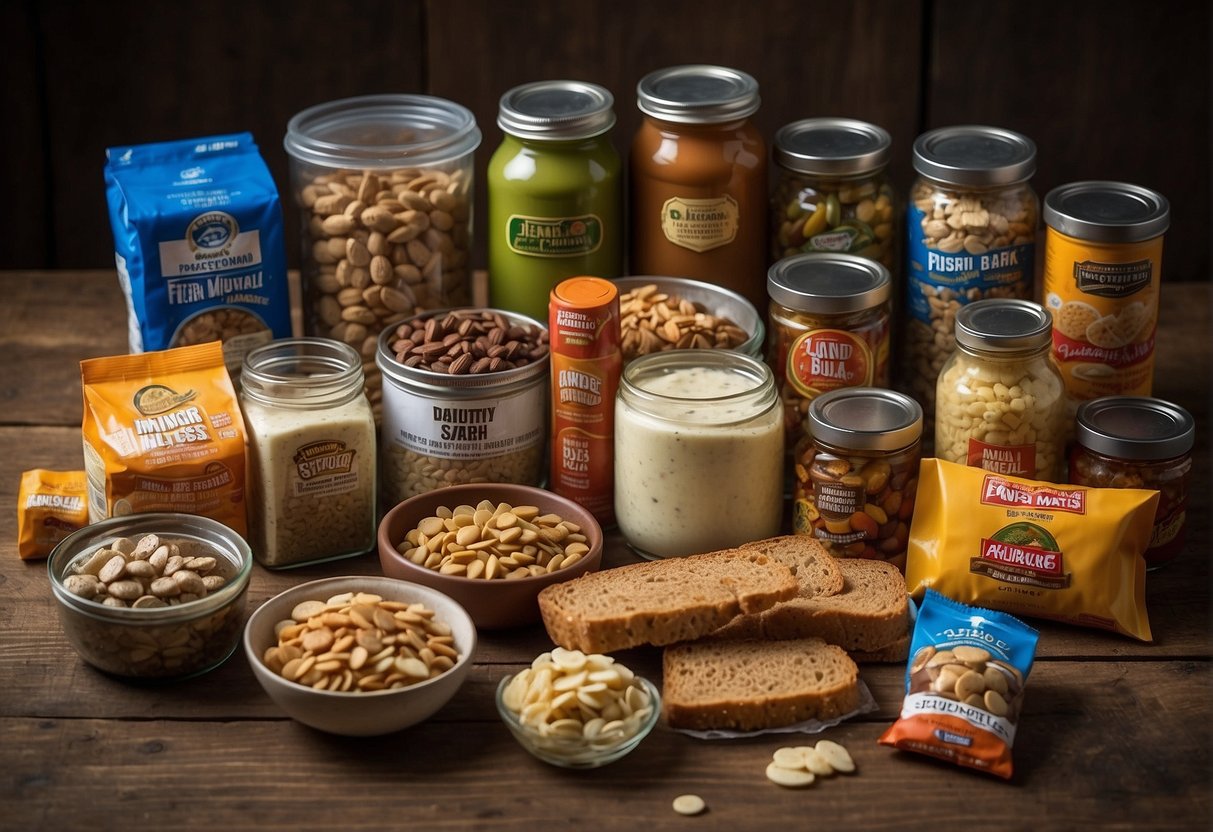
In building your bug out bag, paying attention to the details can make all the difference. The right tools and supplements can enhance your nutrition and energy levels in a survival scenario.
Cooking and Preparation Tools
Tools for Food Preparation:
For an efficient use of your food resources, you need suitable tools. Here are indispensable items:
- Portable Stove: To heat meals and boil water
- Cook Set: Compact pots and pans
- Utensils: Lightweight, durable eating tools
- Can Opener: For any canned goods
- Manual Food Processor: For chopping without power
Supplements and Drink Mixes
Enhancing Nutrition:
Supplements are crucial for maintaining health when your diet is limited.
- Multivitamins: A daily staple for nutritional gaps
- Powdered Milk: For calcium and vitamin D
Beverage Options:
Proper hydration mixes can improve taste and morale.
- Coffee/Tea Bags: For a comforting hot drink
- Drink Mixes: Instant energy with flavored options
Planning and Storage

When you’re building your bug out bag, planning and storage are crucial to ensure you have reliable food supplies that meet your nutritional needs without impeding your mobility.
Calculating Quantities and Ratios
To strike the right balance, consider the caloric intake you’ll need based on your activity level and the duration of time you’re planning for. A typical active adult may require anywhere from 2,000 to 2,500 calories per day. However, you’ll need more if exerting a high level of physical activity. Aim for a mix of:
- Carbohydrates for energy
- Proteins for muscle repair and satiety
- Fats for long-lasting energy
- Vitamins and minerals to maintain health
Use a table to break down your food categories and intended quantities:
| Food Category | Daily Quantity | Notes |
|---|---|---|
| Carbohydrates | 50% | Emphasize complex carbs for longer energy. |
| Protein | 30% | Include varied sources, like nuts and freeze-dried meats. |
| Fats | 20% | Focus on healthy fats, such as those in seeds and nut butters. |
Packing Your Bug Out Bag
Each food item in your bug out bag (BOB) should be chosen for maximum efficiency and minimum weight. Opt for lightweight, compact packaging and consider double-packing to avoid leaks or scent trails. Your food should be accessible, with more frequently eaten items near the top. Using vacuum-sealed bags and removable pouches can aid in organization and rationing. Rotate your stock regularly to keep it fresh and in line with expiration dates.
Creating a Sustainable Food Pantry
For longer-term survival situations, build a food pantry with a variety of bulk items that have a long shelf life. Incorporate:
- Grains: rice, quinoa, oats
- Legumes: beans, lentils
- Powdered goods: milk, eggs
- Preserved proteins: canned meats, jerky
- Seeds and nuts: for snacking and added nutrients
Purchase in bulk to reduce cost per unit and maintain a variety of food items to prevent palate fatigue. Opt for sturdy shelving in a cool, dry place for optimal storage. Evaluate your pantry periodically and use a first in, first out (FIFO) method to manage your stockpile.

Leave a Reply